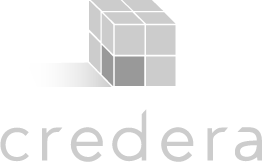Colorado School Grades is a coalition of 18 partner groups. Our guest posts feature these organizations and others, who will offer tips and advice for parents who want to choose or improve a school.
By Shelby Edwards, Senior Fellow , Colorado Children’s Campaign
, Colorado Children’s Campaign
No matter if you are a parent in Durango or Denver, Dolores County or Douglas County, you want the same thing: for your child to grow up healthy and smart. You want to know that your child is in a safe school that will help her develop and learn. Measuring whether all that is happening can be tricky, however.
Colorado School Grades is a valuable resource for parents across Colorado. For parents in the metro area who have many school choices, School Grades offers a place to make comparisons and get clear information when it’s time to decide where to send children to school. However, when it comes to rural Colorado where school choice often isn’t an option, School Grades still provides a valuable tool: transparency.
Getting a clear picture of improvements over time and how well students are doing at your local school can help you be a stronger advocate for your child’s education. This knowledge can help you ask the right questions and drive stronger outcomes for your children and for all kids in your community. With school grades, you can see where your local schools are doing well and where they are struggling.
Let’s look at one example, Roaring Fork High School in Roaring Fork RE1 School District. The snapshot provided by Colorado School Grades shows us:
- Roaring Fork High is ranked 180 out of the 333 high schools in Colorado for overall performance.
- Academic growth and proficiency hasn’t changed much during the past 3 years.
- 93.8 percent of students graduated within four years.
- 86.4 percent of English language learners graduated within four years.
- 43 percent of students who went on to college in Colorado needed to re-take high school level courses known as remediation courses.
With school performance data in hand, we can ask deeper questions of our school leaders. How can we better prepare our graduates for college and careers? Why do our students need to take remediation courses? How is the school working to increase academic growth? How much growth is “good enough”? What can be done to help support our English language learners?
Similar questions prompted teachers, administrators, parents, policy makers and communities to work together to find solutions and pass groundbreaking reforms to the public education system. New assessments, evaluations, professional development programs, instruction and standards are being implemented in a combined effort to improve student outcomes across the state. New standards, for example, have been implemented across 10 content areas that make clear what is being expected of your child each year. You can read through the Colorado Academic Standards to better understand how Colorado is increasing emphasis on problem solving and creative thinking over rote memorization of facts.
Prepared with information about your school and the expectations of your child, it will be easier to talk with the teacher and school leaders about what is needed for success throughout school and after high school. With Colorado School Grades, you’ll have the information at your fingertips to track performance improvements or slow-downs at your child’s school from year to year.
Great schools don’t just happen. They are intentionally built by people who believe we have a responsibility to ensure that all Colorado children – no matter who they are or where they live – graduate from high school ready to succeed in college and 21st Century careers. Focusing on every student, every year is the smartest path to building healthier communities and a stronger economy for today and tomorrow.
 |
| 


